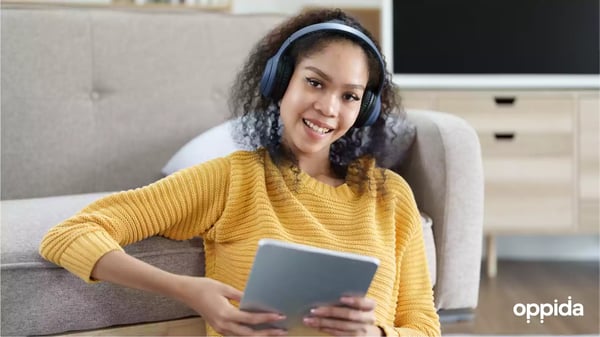In 2014, the Australian government committed to reaching AA standards of the Web Content...
Designing accessible online learning content: small changes, big impact on engagement

In today’s technology-driven world, the digital generation is becoming increasingly selective in their search for engaging and interactive content and positive learning experiences. The tech-savvy generation can afford to be choosy because they know they learn—and absorb information—better when the experience is good. So, when it comes to digital education, delivering a quality student learning experience should be the primary objective of every online learning website and app. As learners have diverse learning needs, designing accessible online learning content is crucial.
When executing these primary objectives, organisations need to provide a positive learning experience for everyone. This is why designing online learning content with accessibility in mind is now a must rather than an option—it’s also the law in many countries across the globe too. Treating accessibility as an afterthought is also no longer something you can afford to ignore in today’s competitive eLearning landscape. But most importantly, creating accessible online learning content establishes inclusivity for everyone.
What it means to be inclusive and accessible
The challenge with online learning platforms lies in creating personalised learning experiences for everyone. Which is why that challenge is best solved by putting accessibility as a priority in design.
Being inclusive is about acknowledging, valuing and engaging with all students and their diversity of experiences. As well as supporting the different forms of knowledge and abilities that students bring to the learning forum. This principle of inclusion needs to align with the accessibility of curriculum design and delivery with learning assessment. An inclusive curriculum is responsive to and builds on the diverse knowledge base of students. Such inclusivity needs to be reflected in both learning and assessment activities.
For your online learning platform to be inclusive and treats students equally, it’s necessary to implement accessibility features. To be accessible means offering online learning content to a wider audience. At the very least, the lack of accessibility as a priority in designing the content will result in an unequal learning experience for those involved.
It is also worth noting that accessibility is not a difficult thing to implement. A few design tweaks, paying attention to the user journey and UX, and deliberate accessibility features implemented across the learning platform will boost your inclusivity and equality ratings to a whole new level.

Focus on your students
Learners or students have different needs. Unfortunately, not all of those needs are evident when they access your platform. Unless you specifically ask students to disclose any disabilities, it is virtually impossible to deliver a personalised yet accessible learning experience across the board. This calls for a more comprehensive approach from the outset in your design and development stages.
A comprehensive approach considers accessibility as you craft every element of your online learning platform and its content. Clear objectives—such as making the online learning experience easier and more enjoyable for all learners—are the ones to pursue. The way to achieve them is by incorporating good accessible design principles.
That actually brings us to the next point.

How to improve accessibility
Accessibility all comes down to accessible design and UX principles. There are a lot of things that you can do to improve the accessibility of your online learning content. Start with optimising text, images, and colours. Simple optimisations such as these are great for boosting your online learning content’s accessibility.
Here’s one more tip to keep in mind about designing for accessibility: use whitespace wisely. By adding enough space between elements, you not only make your content more readable but also help create a more pleasant learning experience as a whole.
You will be surprised by how much more engaged your students are too. These tweaks also help improve the overall learning experience for everyone. This is what being inclusive brings to your learning platform.
Naturally, you cannot stop with just tweaking text and images. There are other web elements that can be optimised. Plus, you can play with the content formats that you deliver to students.
Now that we’ve covered the why of improving accessibility and inclusivity in your online courses, discover the best ways to optimise your content for accessibility. Download Oppida’s ‘Top 10 things to consider when designing for accessibility’ which is available on our website. It’s a comprehensive set of guidelines that outlines how to execute all the features touched on in this article.
Embrace accessibility in all your content. There is no better time to deliver a better learning experience and create an inclusive online learning platform for every student.



